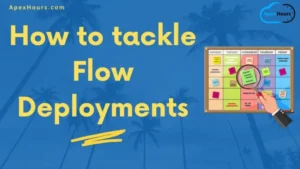Data is considered to be the new gold in this digitalized world. Its safety has become a priority for both small and large businesses. With advancements in cyber security Chicago and other regions, data breaches and cybercrimes have also undergone massive transformation, thus, increasing the need to be more vigilant. Join us to learn about How do you handle data security in Salesforce?
Salesforce, as a leading customer relationship management (CRM) platform, houses vast amounts of valuable data, making data security a crucial aspect of its usage. This guide aims to shed light on effective strategies for enhancing data security within Salesforce, ensuring your organization’s and customers’ data remains secure and confidential.
What is Salesforce Data Security Model?
Salesforce’s security model is robust, offering multiple layers of protection to keep data secure. It is designed to ensure that only authorized users have access to specific data, based on their roles and permissions.
The model includes organization-wide defaults (OWD), role hierarchies, sharing rules, and profiles and permission sets. Understanding and correctly implementing these features is the first step towards securing your Salesforce environment.
Implementing Strong Access Controls
- Use of Profiles and Permission Sets: Profiles and permission sets allow administrators to define who can see what and do what within Salesforce. It is crucial to adhere to the principle of least privilege, ensuring users have access only to the data and functionalities necessary for their roles.
- Two-Factor Authentication (2FA): Enabling 2FA adds an extra layer of security by requiring users to verify their identity using two different forms of authentication before accessing Salesforce. This significantly reduces the risk of unauthorized access.
- Regularly Review User Access: It’s essential to conduct regular audits of user access levels and permissions to ensure they are still appropriate for each user’s current role. Removing access for users who no longer need it helps minimize potential security risks.
Data Encryption
Salesforce offers several options for encrypting data, both at rest and in transit, to protect it from unauthorized access:
- Platform Encryption: Salesforce’s Platform Encryption allows organizations to encrypt sensitive data at rest without affecting functionality. This ensures data is secure, whether stored in the database, search indexes, or elsewhere.
- TLS (Transport Layer Security): Ensure that data in transit is protected by using TLS, which encrypts the data exchanged between your users’ browsers and Salesforce servers, safeguarding it from interception.
Audit Trails and Monitoring
Salesforce provides comprehensive audit trails that record and track user activities within the system. Regularly monitoring these audit trails helps in early detection of suspicious activities, enabling timely intervention. Setting up alerts for unusual access patterns or modifications can further enhance security.
Learn more about Monitoring & Auditing Tools in Salesforce.
Data Backup and Recovery
While Salesforce ensures the high availability and integrity of data, having a robust backup and recovery plan is essential for any unforeseen data loss or corruption:
- Regular Backups: Implement regular backup procedures to ensure you have recent copies of your data. Salesforce offers data export options, which can be automated to run at scheduled intervals.
- Use of Third-Party Backup Solutions: Consider using third-party backup solutions that specialize in Salesforce data for more comprehensive backup options and easier recovery processes.
Learn more about Salesforce Backup and Restore.
User Education and Training
The human element often poses the greatest risk to data security. Providing regular training on data security practices and phishing awareness can significantly reduce the risk of data breaches:
- Security Best Practices: Educate users about creating strong passwords, recognizing phishing attempts, and safely handling data.
- Phishing Awareness: Since phishing is a common attack vector, training users to identify and report phishing attempts is crucial.
Salesforce Security Best Practices: Protecting Data and Ensuring Compliance.
Regular Security Assessments
Conducting regular security assessments and audits helps identify potential vulnerabilities in your Salesforce environment. Salesforce offers several tools and reports, such as the Security Health Check and Salesforce Shield, which can provide insights into your security posture and suggest improvements.
Customizing with Care
When customizing Salesforce, whether through custom code or third-party applications, it’s essential to follow secure development practices:
- Secure Development: Ensure custom code is written securely, following Salesforce’s
development best practices to avoid introducing vulnerabilities. - AppExchange Security: Only install third-party apps from Salesforce’s AppExchange that
have passed Salesforce’s security review to ensure they meet high security standards.
The Bottom Line
Securing data within Salesforce is a multifaceted approach that requires careful planning, implementation, and ongoing management. By understanding Salesforce’s security features, implementing strong access controls, encrypting data, monitoring user activities, and educating users, organizations can significantly enhance their Salesforce data security.
Data security is not a one-time task but an ongoing process that evolves with new threats and technologies. Ensuring the confidentiality, integrity, and availability of data in Salesforce not only protects your organization’s valuable information but also builds trust with your customers. I hope this will help you to understand how you can handle data security in Salesforce.




